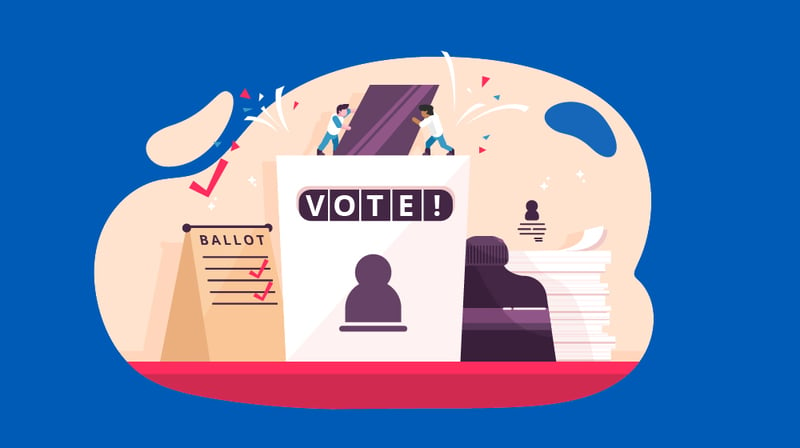Student leaders have a tall order in front of them.
In addition to their coursework, their social lives, and most likely their jobs, they devote precious time and energy to creating campus experiences for their peers.
This is often motivated by a desire to help build a positive campus community. It can be thankless, but it’s an invaluable way of forming interpersonal connections.
With all this considered, we owe it to the student leaders we work with to provide the best tools possible to support their organizations. Without support, students will likely try out methods that’ll ultimately frustrate them — and their staff advisors. This means a plethora of random collaborative documents, shared drives, paper forms, and other solutions that may work for now, but aren’t angled for sustainability over time.
Fortunately, student engagement platforms can help! Here are some reasons why you should consider equipping student leaders with one.
Top 5 Benefits
1. Stay Organized and Save Time
Just imagine the feeling you get when something you need can’t be found and no one knows where to find it. Perhaps it’s an account number or instructions for an important task.
It’s awful but can be avoided! Student leaders are well served by a system that helps them to organize everything — with member and executive board information, forms, and event management tools all in one place.
Without a platform, these things would all be jumbled and disconnected. But with a student engagement platform, I’ve seen great student leaders easily pass on tips to their successors, including what’s worked for them best. They can also refine processes for improvement each year, such as where to get the best deal on supplies or the best time or place to hold an event.

Without a good organizational system in place, things can get lost and people can lose access to documents, resulting in lost productivity across the board. In addition, being able to centralize rosters in the same spot where you manage events simplifies the effort of reaching out to your members.
Plus, the ability to use forms and polls for org members is immensely helpful, as everything is digitized, stored, and accessible in just a few clicks. There’s no need to duplicate efforts in transferring data around, which leads me to my next point…
2. Make Decisions Informed by Data
With everything in one place, student leaders have access to useful data, which can help them in planning future events and engagement strategies. Whether through tracking attendance at a program or gathering feedback through forms contoured to their needs, data in student engagement platforms is all displayed a visual, useful way.
Without this type of data at their fingertips, student leaders would make decisions based on anecdotes or intuition — which may work out, but it’s much better when there is at least some evidence to back up their ideas. Because if, for example, someone asks you why you’re investing a lot of time and money on a large-scale program, and the only reasoning you have is your gut, it doesn’t exactly inspire a ton of confidence.
But with a student engagement platform, you can show attendance trends, student ratings and reviews, and feedback from surveys that have all informed your decisions.
3. Create Transparency for All Stakeholders
Having a centralized hub that’s accessible to any and all stakeholders also helps with another important goal: Transparency. Anytime anyone needs to know what’s happening, there’s an easy way to find out. There doesn’t need to be a gatekeeper or a delay.
This can inspire invaluable support and confidence from students all over campus, rather than making people skeptical when they don’t know what’s going on. I certainly wish that, as both a student and a professional, I had some way to easily track student attendance at events to report out, instead of having to do things manually every time.
4. Level Up the Fun
Another sort of unintended byproduct of student engagement platforms is that they free users up to have more fun. Students and staff worry less about problems they can solve, waste less time on inefficient processes, and collaborate more effectively to accomplish their goals. That sounds like a beautiful state of (student) affairs to me!
Digital engagement tools can also help keep things light. Maybe you’re making funny avatars, profile photos, screen names, or unique badges that are inside jokes with your students. It’s important to not lose the silly side of the work we do with students; it can be tough but it is so rewarding when done efficiently.

5. Guide Students Through Transitions and Training
Another common barrier to student success is the transition of leadership, commonly due to students graduating or shifting their obligations. With a disparate collection of documents, sometimes just one person leaving their role can make it nearly impossible for the leaders left behind to get things done.
Having a centralized digital home for the organization can help solve that, as it allows for consistency and efficiency in the transition of student leaders across the board. Students can see what decisions were made and resources were gathered previously, then pick up right where their predecessors left off.
Although training of some sort will still be necessary, a platform can at least make the process as trouble-free as possible. Unfortunately, I’ve seen organizations stay afloat solely because of one person, and once they left, everything fell apart. I’ve also seen great traditions live on well past the students who created them, thanks to a smooth transition of information and instructions.
Managing student organization and leaders is a tall order in and of itself. There are so many details to keep straight and unique needs required of each organization and leader within them. As a student affairs professional, it serves your interests as much as the students’ to empower them with a robust student engagement platform that consolidates vital data and shared resources.
I have found that such tools have helped greatly to streamline processes, simplify work, and support my students in achieving higher levels of success. Plus, I know that even if and when I transition out of my professional role, everything I’ve worked to put into place will still be there and my hard work will continue to matter for many more students to come.
How do you support your students’ growth and encourage them to lead? Tweet us at @themoderncampus and @HigherEd_Geek.





